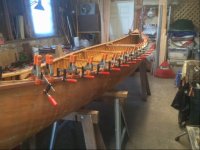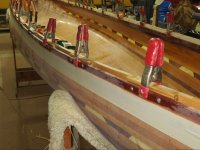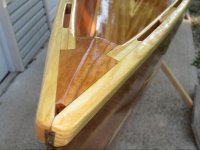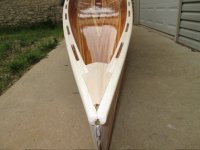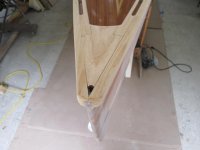Jim ... that wasn't a response to your post, just observations and what i do ... screws add extra weight and I really would question that the end result is stronger than epoxying inner and outters the way i do. I would concede that the scuppers would provide easy tie downs, that solid gunnels don't provide (tie downs would be easy to add, but I generally don't seem to require them much).
Jim and Denise ... you both suggest that unscuppered gunnels collect water ... if you read the post it mentioned that there is an inside 45 degree bevel, there is not any place on the inner gunnel to collect the water ( no flat area) ... when the boat is turned over the water flows out over the chamfer
Depending on how the boat will be used, design considerations change, If I was just carrying the canoe from the car to the launch, I might make one set of decisions, if I was tripping and carrying a canoe for a kilometer, those same decisions would change. In my case, I trip with the boat, which includes portaging some longer trails ... if I can save a few pounds and not compromise the canoe, I am likely to lean towards saving weight.
There isn't any "one" right way to build a canoe, when you build it yourself, you get to customize it to suit your purpose ...
Brian

